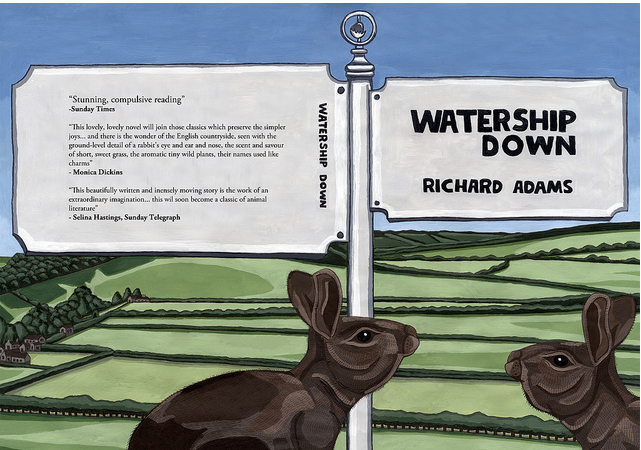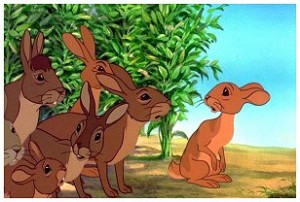Review: Watership Down
Although it maintains a place in secondary school curricula up and down the country, it would be feasible to posit that Richard Adams’ Watership Down is best known these days for scaring the droppings out of young viewers of its 1978 film adaptation. Certainly, for a tale which appears ‘fluffy’ and whimsical at a glance, it’s easy to overlook the gravity of the content within its four-hundred-and-seventy pages.
Having always been intrigued by the novel’s premise, and living relatively close to the meadows where the action actually takes place, I decided to finally settle down this Easter to read through Adams’ debut publication. And what a deep, unforgettable read it is; still as daisy-fresh as when it first hit the shelves more than forty years ago.
Written almost entirely from the perspective of a group of rabbits in southern England, Watership Down follows the adventures of the compassionate Hazel and his quick-witted companions. After Hazel’s younger brother Fiver suffers a premonition regarding the imminent destruction of their home warren in Sandleford, the two of them convince a small coterie of rabbits to escape, thus beginning a journey across the land to find a new home. On their travels, they must rely on their cunning and resourcefulness as they encounter danger at every turn, not least in the form of the warren of Efrafa: a brutally oppressive territory governed by the tyrannical General Woundwort.
First and foremost, Watership Down succeeds so thoroughly because it is a remarkably immersive tale. Even though a clear discrepancy is drawn between the lifestyles of rabbits and humans, it is easy for readers to empathise with these creatures: the world which Adams creates for his protagonists is a vivid one, and rich on every level. A whole mythology is crafted for the species, with the reader treated to folk-tales and snatches of the rabbits’ native Lapine language (words such as “silflay” and “elil” become a second tongue as the story progresses). Adams also has a dextrous grasp of evocative imagery, employing a keen knowledge of nature to weave breathtakingly detailed scenery throughout the novel.
The characterisation also deserves special praise. Although several in Hazel’s group could benefit from further embellishment, the central figures are as memorable and captivating as any literary hero or villain you’d care to name. These rabbits make for thrilling and welcoming company from beginning to end, from the heroic Hazel to the courageous Bigwig, the ever-loyal Fiver, and of course, the terrifying figure of General Woundwort. If you’re sceptical towards the notion that a rabbit could ever seem remotely threatening, just wait until you’ve read about the ferocious leader of the Efrafans. As any viewer of the screen adaptation will attest, Woundwort is a chilling creation.
When it comes to figurative analysis, Watership Down strikes a miraculous balance: without losing sight of its visceral sense of adventure, its potential for interpretation knows no bounds. There are plenty of theories to be dug up surrounding different facets of this novel: it can be read as a political allegory, an account of post-Cold War strife, or a study of the conflicting impulses of a single race. It may even leave you questioning your own position as a human being. Following the destruction of the Sandleford Warren, Captain Holly muses that “men will never rest until they’ve spoiled the earth and destroyed the animals.” It’s a haunting thought, and one which certainly stayed rooted in my mind beyond the book’s closure. But in spite of all this, Watership Down can also offer the purest form of escapism: it’s just as satisfying on a visceral level.
So, if you’re still looking for something to fill the hours this Easter, I can’t recommend Adams’ first novel highly enough. Whether you’re a newcomer to the world of Hazel and his friends, or rediscovering this land with new eyes, Watership Down is one of the most heartfelt and rewarding works of literature you’re ever likely to immerse yourself in.


Comments